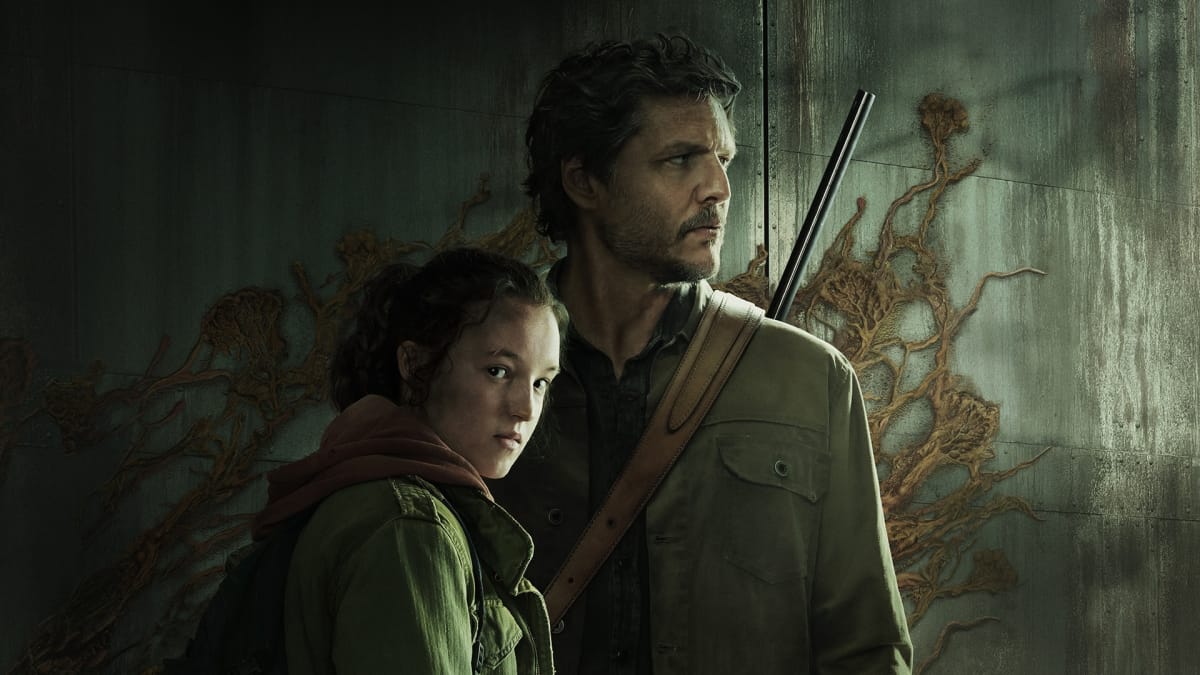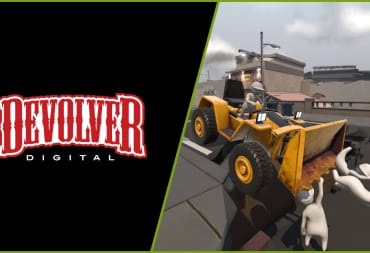After releasing a decade ago and marking a cultural shift in the perception of what storytelling in games could amount to, The Last of Us has earned quite a reputation amongst gaming communities of all sorts. When the game that felt like it was written to be a primetime HBO show was announced to be coming to HBO a few years back, many fans of the game, myself included, assumed it would be one of the few video game adaptations to understand the assignment due to how filmic the source material already is. Now that it’s here, The Last of Us on HBO proves to be a retelling that is enduring change in all the right ways to survive as a piece of art for non-gamers to better understand the capabilities of the medium and remind fans how important Naughty Dog’s landmark release was.
This review contains early spoilers The Last of Us Part I.
The Last of Us Episode 1: When You’re Lost in the Darkness Review
The first episode of The Last of Us on HBO clocks in at an hour and 28 minutes. Tasked with introducing those new to the series with the rules of the world that are so familiar to players, like how cordyceps turn ants into zombies and how Naughty Dog used real-world science to come up with their own spin on a zombie outbreak, The Last of Us chooses to surprise out the gate, beginning with a scene taking place in 1968, a time unexplored in the series so far.
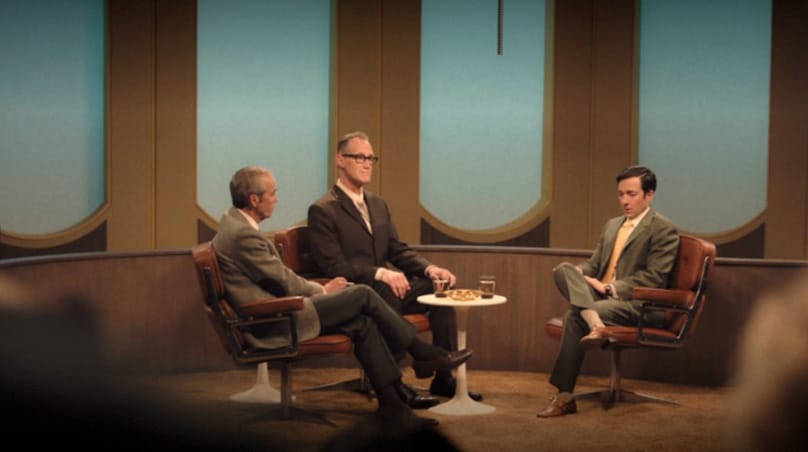
An audience oblivious to their future sits and watches scientists discuss the silent killers of viruses and infectious diseases. The color scheme is warm, disturbingly comforting, and embraces a more ignorant, consumer-indulgent post-war America. The smarmy late-night host makes light of the high improbability of a global pandemic laid out before his eyes as the audience looks to his charm for comfort. The entire scene is glib, unsettling, and so authentically Last of Us despite occurring decades before we meet our familiar cast.
This scene hits close to home for a variety of reasons, one of which being the state of our world the last few years. Despite most of this scene recapping Naughty Dog’s original pseudo-science marketing of the game’s release in 2013, the additional insinuation that the fungus adapted to infect humans due to global warming only further ties the reality of The Last of Us closer to one resembling our own. Beginning the show here was an inspired choice to resonate with a modern audience, engage fans who think they knew everything, and most importantly, create an underlying dread in the dramatic irony of it all.
When we jump to Outbreak Day, now occurring in 2003 rather than 2013, we’re introduced to Sarah, Joel, and Tommy Miller played by Nico Parker, Pedro Pascal, and Gabriel Luna respectively. Similar to the game, we initially follow the perspective of Joel’s daughter Sarah, as we see her father and uncle from her admiring eyes. Where players connect to Sarah in the game due to having direct control over her, Parker isn’t afforded that direct connection. Instead, we spend nearly 30 minutes of the episode following her about her day - having a normal breakfast with her family, going to school, getting a gift for her father’s birthday, keeping elderly neighbors company. Meanwhile, sirens wail and military planes fly overhead, creating unease while the inevitability of the show's dour concept grows increasingly in our minds like the iconic cordyceps infection.
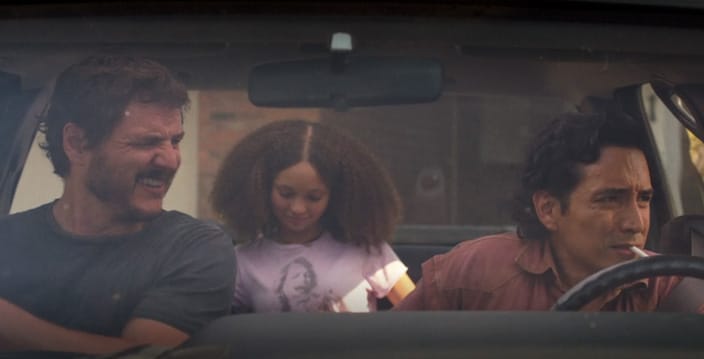
This choice to spend an inflated amount of time with Sarah opens the show with a comforting heart that permeates throughout The Last of Us. Despite the horrors of humanity and state of the world that decorate the show’s surface, the story is one of love, and Sarah is the catalyst for it. Opening with these changes feel authentic to the world while fleshing it out and allowing viewers to ease into our main characters. Pascal is a loveable daddy whose sense of humor is dryer than the drywall he stays late at work to install. Luna is the fun uncle that pokes fun at his older brother with his niece. Parker is the future about to be taken away by the government and man’s neglect for the planet - they just don’t know it yet.
What follows is an incredibly accurate recreation of how the fungi hits the fan. Dialogue is at 1:1 parity with the game at times as is shot composition in instances such as viewing the chaos from the back of Tommy’s truck to Joel and Sarah being shot. Sarah’s death scene is pivotal to why the story of The Last of Us works for Joel as our protagonist and the eventual relationship between the leads of both the series and game.
I’m pleased to say the scene that made the game famous hit even harder in this adaptation. Tears welled up as I saw the pain on Joel and Tommy’s faces as Sarah lay in his arms bleeding out. Even knowing it was coming, it somehow felt more tragic and gut wrenching here than it was in 2013 thanks to stellar performances from all three actors and the allowance for the show to take its time in establishing Sarah as a fully realized character.
The remainder of the episode focuses on the events of Part I, which take place in the Quarantine Zone of Boston. Joel is 20 years older, haunted by the visual of his daughter's death and the audio cues of her final breaths every time he lets his guard down. He’s living with his partner Tess, played brilliantly by Anna Torv, as they smuggle drugs in and out of the QZ between dirty community jobs for a (relatively) better life.
What HBO’s The Last of Us is able to do so well where the game was held back is further flesh out the characters, motivations, and world, divorced from the perspective of the player character. In being able to check in with multiple characters without Joel’s presence, the audience is not influenced by his read on the situation and in turn is be able to observe differing beliefs in a more unbiased way. This is on display most effectively in the introduction of Bella Ramsey’s Ellie and Merle Dandrige, who is reprising her role from the game as Marlene.
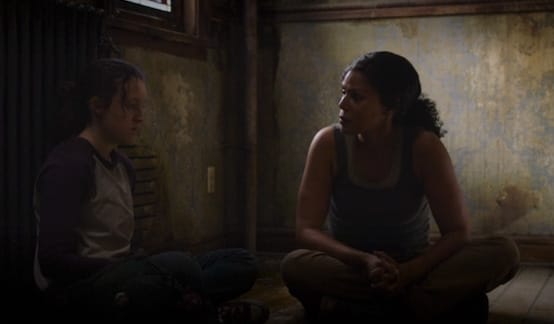
We see these characters meet for the first time as Marlene reveals to Ellie that she’s known her since her birth, and due to her immunity to infection is a new beacon of hope for humanity. The performance from Ramsey here is vulnerable and shows cracks through the hardened punk-rock orphan attitude Ellie held up to this point in the episode. Showing Ellie’s first connection with an adult after a lifetime of believing she was alone provides viewers a look into Ellie’s psyche that will make for a better arc across a season of television compared to players meeting the duo as long-standing acquaintances.
By episode’s end, Joel, Tess, and Ellie are off to the Capitol Building in Boston to rendezvous with a group of fireflies that will bring Ellie west for the hope of studying her immunity. During the trio's first steps outside the walls Joel is confronted by an armed guard pointing a gun at him, Tess, and Ellie and through the affordances of the medium of television plus some clever camera work that wouldn’t be possible in gameplay, the show provides a powerful and satisfying visual arc to Joel in episode 1.
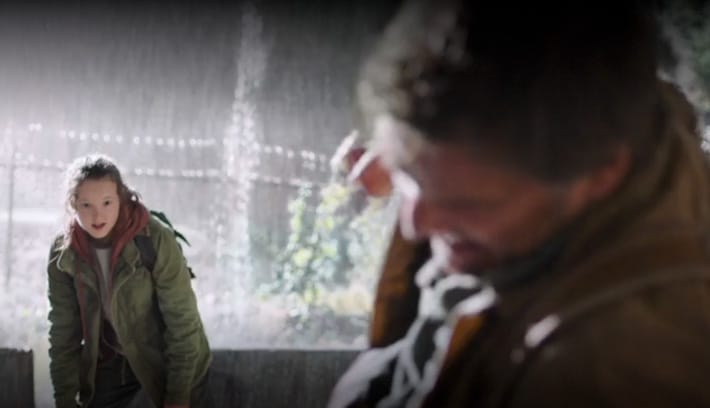
The Last of Us on HBO is off to a ridiculously promising start. Being based on a title which so clearly wears its reverence for film and television on its sleeve, Neil Druckmann and Craig Mazin are able to so authentically begin telling the story of Joel and Ellie to a wider audience with this adaptation. The changes that are made work both in service of improving the storytelling for television, and laying the groundwork for not only this season, but potential future seasons. Now that the original story is being revisited with knowledge of where future acts explore these characters, I can already pick up on small nuances Druckmann is adding here to have greater emotional payoffs should Part II ever be adapted.
If The Last of Us episode 1 set the tone with unease and dread in its initial scene, the final moments set the tone for what the series will be: a world dripping in blood and violence that at its core holds a story of connection, family, and what people are willing to endure to survive for what they love.
Review Summary
Pros
- Excellent performances
- Uses aspects of television to elevate the presentation of the game's narrative
- New content feels authentic to the series
Cons
- Spaghetti mouth infected are goofy, bring on the Clickers
- Fans may experience some reverse uncanny valley with just how similar some of the scenes are
Have a tip, or want to point out something we missed? Leave a Comment or e-mail us at tips@techraptor.net
